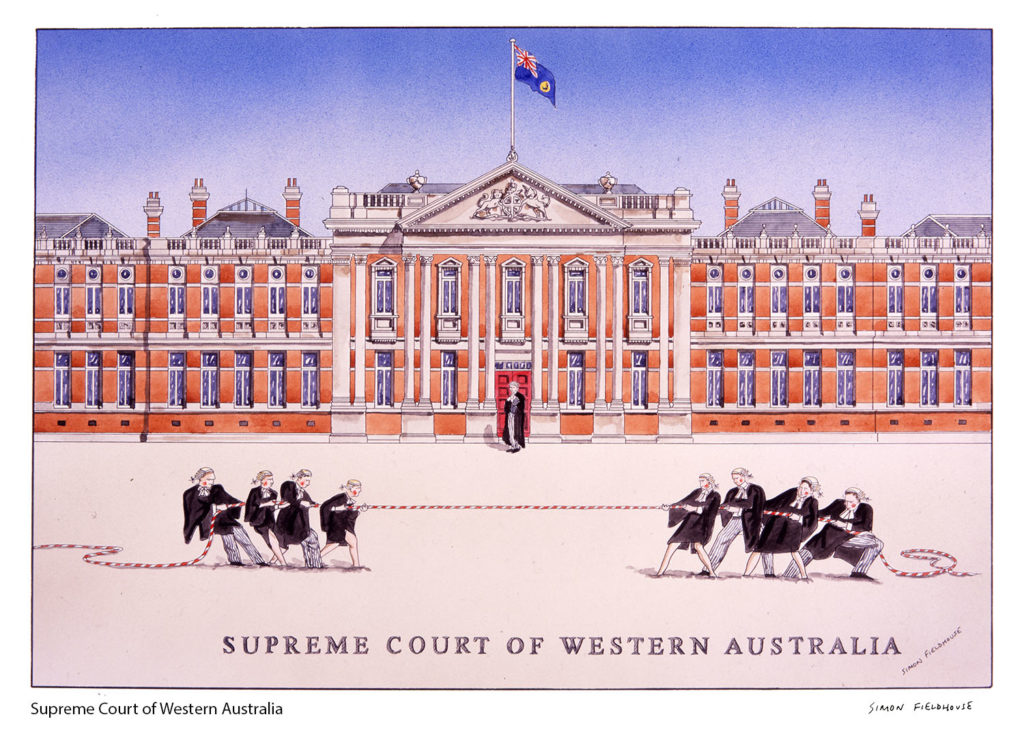
Supreme Court of Western Australia
The Supreme Court of Western Australia: A Pillar of Justice and Democracy.The Supreme Court of Western Australia stands as a cornerstone of the state's legal system, embodying principles of justice, democracy, and the rule of law. Established in 1861, it has played an indispensable role in upholding the rights of individuals and ensuring the smooth functioning of the legal framework within the state.
The Supreme Court of Western Australia is an essential part of the judicial branch of the government, which comprises a hierarchy of courts, each with specific responsibilities. The Court is located in the heart of Perth, the state's capital, and holds a vital role in dispensing justice, resolving disputes, and interpreting and upholding the law. Its jurisdiction extends over a wide range of matters, including civil, criminal, and appellate cases. In civil cases, the Court deals with issues like contract disputes, personal injury claims, and property matters, while in criminal cases, it handles serious offenses such as murder and other felonies.
One of the most significant aspects of the Supreme Court is its role in upholding the rule of law. This principle dictates that everyone, regardless of their social status or background, is equal before the law. The Court ensures that laws are applied consistently, providing a fair and just legal system that protects the rights of individuals. This is a fundamental pillar of democracy, as it ensures that the rights and freedoms of citizens are upheld, making the Supreme Court an essential guardian of democracy.
The Court also plays a pivotal role in ensuring that the legal system remains adaptable and responsive to evolving societal needs. It interprets and develops the law, setting important precedents for lower courts and ensuring that the law remains relevant and just. Additionally, the Court's appellate jurisdiction allows for the review of decisions made by lower courts, which serves as a vital check on the legal system, ensuring that justice is served and that errors are rectified.
Furthermore, the Supreme Court of Western Australia has embraced technological advancements to enhance access to justice. The use of e-filing, online databases, and video conferencing has improved efficiency, making legal processes more accessible and cost-effective for all citizens. This commitment to modernization demonstrates the Court's dedication to providing an efficient and effective legal system.
In conclusion, the Supreme Court of Western Australia is a venerable institution that upholds the principles of justice, democracy, and the rule of law. It plays a pivotal role in resolving disputes, interpreting and developing the law, and ensuring the rights and freedoms of individuals are protected. By continuously adapting to the needs of society and embracing technological advancements, it remains an essential pillar of the state's legal system. As an institution at the forefront of the justice system, the Supreme Court of Western Australia exemplifies the ideals upon which democracy and the rule of law are built.
The Supreme Court building is located in St. George's Terrace, Perth, which is known for its heritage architecture and historic significance. It is a visually imposing structure that commands attention. One of its most striking features is its neoclassical façade, which is characterized by grand columns, ornate detailing, and a prominent pediment. This classical architectural style reflects the gravitas and solemnity associated with the institution of justice and the legal system.
The imposing entrance is adorned with a grand portico supported by a row of massive, fluted columns that project an aura of dignity and respect for the rule of law. Above the entrance, there is a large, sculpted pediment with intricate designs that evoke the symbolic elements of justice and the importance of the Court's role in upholding the law.
The interiors of the Supreme Court building are designed with a similar attention to detail and grandeur. The courtrooms are typically large and well-appointed, featuring elevated judges' benches, elaborate wood paneling, and a dignified color palette. The use of wood, marble, and brass in the interiors adds to the sense of tradition and importance associated with the legal proceedings that take place within the building.
While the building maintains its classical façade and historical significance, it has been modernized to meet the demands of a contemporary legal system. The integration of modern technology is evident throughout the building, with state-of-the-art audiovisual equipment in courtrooms, advanced security systems, and efficient climate control, all of which enhance the functionality and accessibility of the court's facilities.
The architecture of the Supreme Court of Western Australia building also extends to its surrounding grounds, which include landscaped gardens and walkways. These areas provide a serene and contemplative atmosphere, offering a peaceful escape for those seeking respite during their legal proceedings.
In summary, the architecture of the Supreme Court of Western Australia building is a blend of classical grandeur and modern functionality. Its neoclassical façade and ornate detailing reflect the historical and symbolic importance of the institution of justice, while its interior spaces are equipped with the latest technology to ensure the efficient administration of the law. The building's design, both inside and out, creates an atmosphere of solemnity, dignity, and respect for the legal process, making it a fitting setting for the administration of justice in Western Australia.